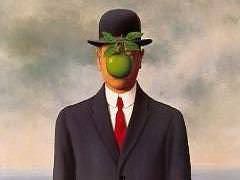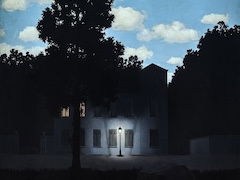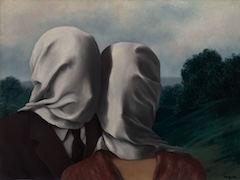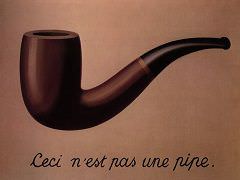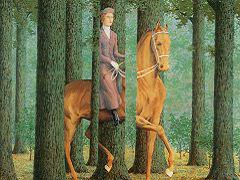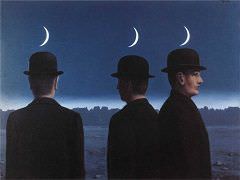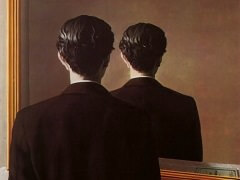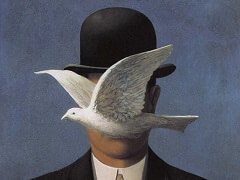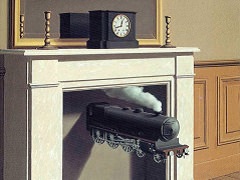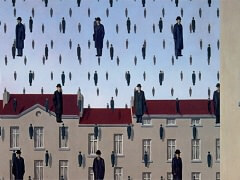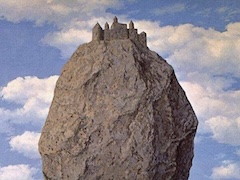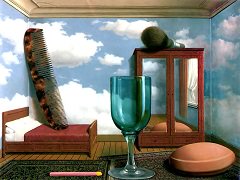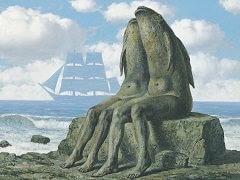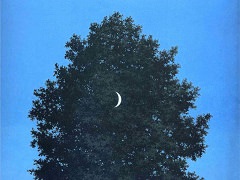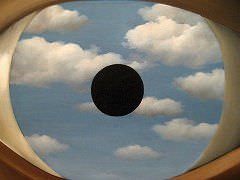The Human Condition, 1933 by Rene Magritte
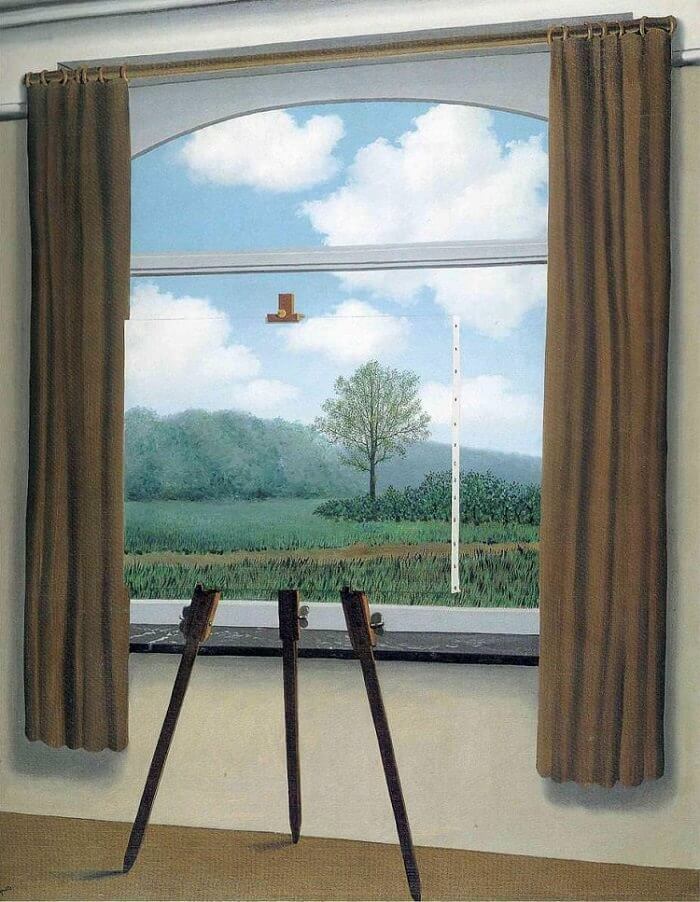
Two of Magritte's favored themes were the "window painting" and the "painting within a painting." The Human Condition is one of Magritte's earliest treatments of either subject, and in it he combines the two, making what may be his most subtle and profound statement of their shared meaning.
The Human Condition displays an easel placed inside a room and in front of a window. The easel holds an unframed painting of a landscape that seems in every detail contiguous with the landscape seen outside the window. At first, one automatically assumes that the painting on the easel depicts the portion of the landscape outside the window that it hides from view. After a moment's consideration, however, one realizes that this assumption is based upon a false premise: that is, that the imagery of Magritte's painting is real, while the painting on the easel is a representation of that reality. In fact, there is no difference between them. Both are part of the same painting, the same artistic fabrication. It is perhaps to this repeating cycle, in which the viewer, even against his will, sees the one as real and the other as representation, that Magritte's title makes reference.
Magritte's use of the curtain in this picture invoked a device that had been employed by a number of the Old Masters as a trompe-l'oeil way of drawing the viewer into the composition, pointing to the artifice of the scene, and also showcasing their own ability to paint something as lifelike as the drapery hanging in front of a picture; this was the case, for example, in The Art of Painting and The Girl with a Pearl Earring by Johannes Vermeer. Magritte's play with the nature of the picture surface was given great scope by his use of similar devices, be it in the stage curtain of The Human Condition

